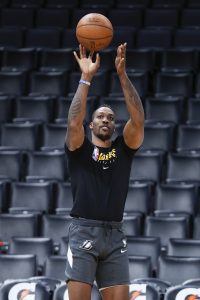The minimum salary exception is something of a last resort for capped-out teams looking to add players, as well as for players seeking NBA contracts, but it’s one of the most commonly used cap exceptions. It allows an over-the-cap team to sign a player to a one- or two-year minimum-salary deal, as its name suggests.
Teams can use the exception multiple times in a league year, giving clubs that have used all of their cap room and other exceptions an avenue to fill out their rosters. The exception also accommodates teams’ acquisitions of minimum-salary players via trade, as players signed via the minimum salary exception don’t count as incoming salary for salary-matching purposes.
Players are entitled to varying minimum salaries based on how long they’ve been in the NBA. In 2019/20, a player with no prior NBA experience was eligible for a $898,310 minimum salary, while a player with 10 or more years of experience was eligible for $2,564,753.
[RELATED: NBA Minimum Salaries For 2019/20]
Over the course of the current Collective Bargaining Agreement, the minimum salary will be adjusted each season to reflect the year-to-year salary cap change. For instance, if the cap increases by 5%, so will minimum salaries.
There’s a wide disparity between the minimum salary for rookies and for long-tenured players, with a minimum-salary veteran of 10+ seasons earning nearly three times as much as a rookie making the minimum next season. The NBA doesn’t want those pricier deals to discourage clubs from signing veterans, however, so the league reimburses teams for a portion of a minimum-salary player’s cost if he has three or more years of experience, as long as the contract is a one-year deal.
For example, when the Lakers signed 15-year veteran Dwight Howard to a one-year pact for 2019/20 using the minimum salary exception, the contract called for a salary of $2,564,753, but the team’s cap hit was just $1,620,564. The league would reimburse the Lakers for the remaining $944,189 at season’s end.
Most salary cap exceptions can only be used once each season. For example, when a team uses its full mid-level exception to sign one or more players, the club can no longer use that exception until the following season. Unlike the mid-level and other cap exceptions though, the minimum salary exception can be used any number of times in a single season. The Lakers, for instance, used the minimum salary exception to sign Jared Dudley and Troy Daniels in addition to Howard.
While many exceptions begin to prorate on January 10, the minimum salary exception prorates from the first day of the regular season. The season is typically 177 days long, so if a player signs after 28 days have passed, he would only be paid for 149 days.
That’s what happened this season with Carmelo Anthony, who joined the Trail Blazers via the minimum salary exception on November 19, the 29th day of the regular season, making his salary and cap hit 149/177ths of their usual amounts. Instead of a $1,620,564 cap charge for Portland, Anthony’s cap charge is $1,364,204. His salary is $2,159,029 instead of $2,564,753.
Here are a few more notes on the minimum salary exception:
- Players signed using the minimum salary exception are eligible for trade bonuses, but not incentive bonuses. A minimum-salary player with a trade bonus cannot be acquired in a trade using the minimum salary exception unless he waives that bonus.
- A minimum-salary player also can’t be acquired in a trade using the minimum salary exception if his contract is for more than two years or if his salary exceeded the minimum in any previous year of the contract.
- When a minimum-salary player is traded during the season, any reimbursement from the NBA is split between his two teams. It’s prorated based on the number of days he spends with each club.
- If a minimum-salary player with a non-guaranteed salary is waived before he exceeds the minimum for a two-year veteran, his team won’t be reimbursed for any portion of his salary.
- Virtually every 10-day contract is for the minimum salary — often the minimum salary exception is the only way for clubs to accommodate any 10-day deals. The NBA also reimburses teams for a portion of the 10-day minimum salary for veterans with three or more years of experience. We have more details here.
Note: This is a Hoops Rumors Glossary entry. Our glossary posts will explain specific rules relating to trades, free agency, or other aspects of the NBA’s Collective Bargaining Agreement. Larry Coon’s Salary Cap FAQ and the Basketball Insiders salary pages were used in the creation of this post.
Earlier versions of this post were published in previous years by Luke Adams and Chuck Myron. Photo courtesy of USA Today Sports Images.
